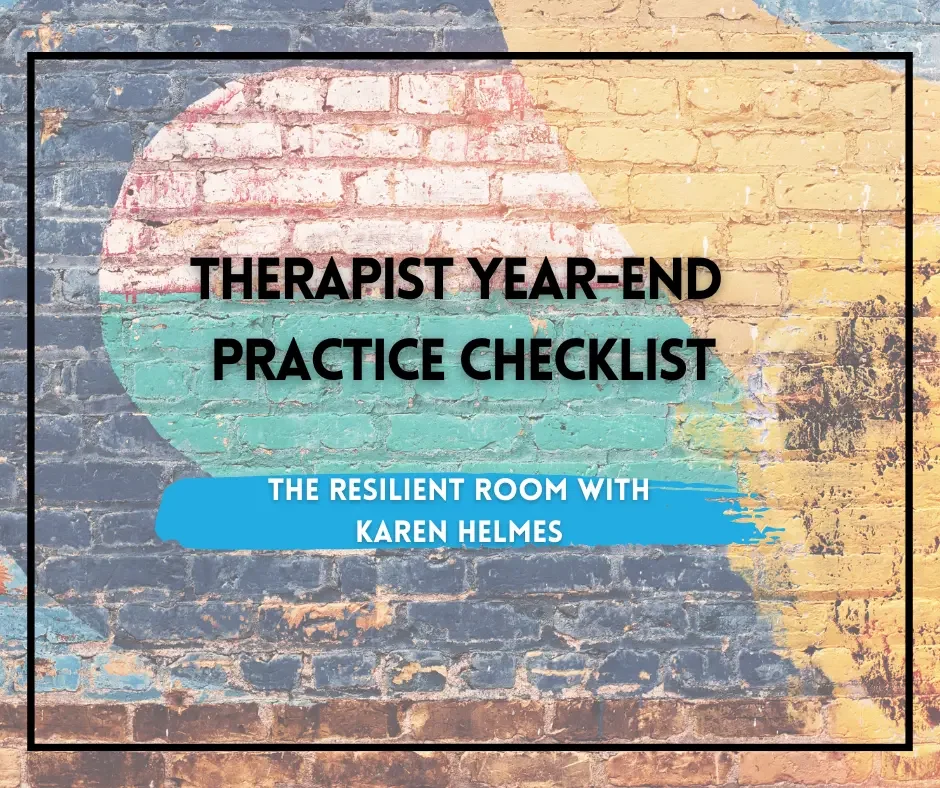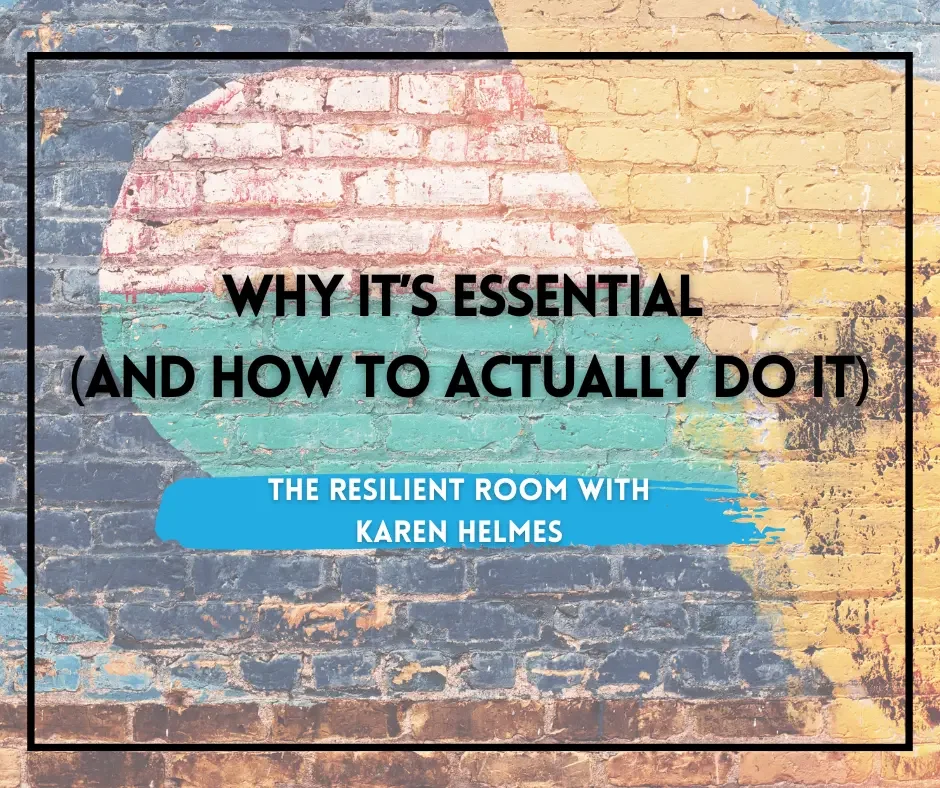Therapist Year-End Practice Checklist
The end of the year can feel like a blur for therapists — balancing holiday stress, client needs, and the administrative work our practices rely on. This therapist year-end practice checklist breaks everything down into simple sections so you can move through it slowly and intentionally. From reviewing policies and documentation to updating your marketing strategy and compliance requirements, this guide helps you prepare your practice for a stronger, more aligned year ahead.
Holiday Self-Care For Therapists
The holidays can stretch even the most grounded therapist thin. Learn how to pace yourself, create realistic schedules, and prioritize holiday self-care — for both you and your clients. From managing burnout to setting boundaries, these therapist-tested strategies will help you show up with presence and peace this season.
Why Supervision Matters for Therapists
Many therapists stop supervision once they’re licensed — but that’s often when it becomes most valuable. In this post, we explore why supervision matters for therapists, especially those practicing Narrative Therapy or Acceptance and Commitment Therapy. Learn how ongoing supervision helps you manage stress, stay ethically grounded, and find clarity in your clinical work (without crowdsourcing advice from Facebook groups).
Taking Vacation As A Therapist
Taking vacation as a therapist can feel complicated — from worrying about clients in crisis to the fear of lost income. But avoiding time off isn’t sustainable. Research shows that nearly half of mental health professionals report burnout, with private practice clinicians being the least likely to disconnect. Vacations aren’t indulgent; they’re essential for professional longevity and emotional wellbeing. Here’s how to plan ahead, manage your practice, and take a real break—without guilt.
This Modality Belongs in Every Therapist’s Toolbox
Every therapist deserves access to approaches that not only support clients through trauma, chronic illness, and depression but also re-energize our own clinical work. There is one modality in particular that is both creative and evidence-based, seamlessly complementing CBT and trauma-focused models while engaging clients of all ages in powerful ways. Learn the four core practices that make it effective, and how you can begin integrating it into your own work immediately.
For Therapists With Anxiety
Many therapists quietly live with anxiety while showing up every day for their clients. Instead of being a weakness, your lived experience can actually be your greatest strength. In this blog, I share practical coping tools that work both in and out of session, plus mindset shifts that can help you embrace your anxiety as a superpower in the therapy room.
Can You Be A Therapist with Depression?
Can you be a therapist when you’re battling depression yourself? The truth is yes - and you’re not alone. Studies show that more than 60% of psychologists have experienced depression at some point in their lives. Far from being a weakness, lived experience can deepen your empathy, enrich your practice, and strengthen the way you show up for clients. Here are practical ways to sustain your work and your well-being, even when depression is part of your journey.
Therapy For Chronic And Invisible Illness
Your lived experience will shapre your clinical work. I know, because as a therapist living with chronic regional pain syndrome (CRPS), I chose to center my practice on clients with chronic, hidden, and mental illness because I understand their pain in a way textbooks can’t teach. Whether you’re navigating your own chronic illness or seeking ways to align your work with your lived experience, you’ll find both inspiration and a step-by-step process to define a niche that’s deeply fulfilling and impactful.
Break Free From Comparison And Define Your Own Success
Therapists are great at giving advice - but not always at taking it, especially when it comes to building a practice while managing the uniqueness of their own lives.
We encourage our clients not to compare, to honor their limits, and to define success on their own terms, yet so many of us struggle to do the same.
In this blog, I share what happens when comparison creeps in, how I navigate private practice with a hidden illness, and the lessons I’ve learned about redefining “enough” for myself.
Boundaries Every Therapist Needs
Being a therapist, you already know that the emotional labor of holding space for others can quietly erode your health. In this honest and practical post, I share the boundary-setting shifts that helped me stop the cycle of burnout and start honoring my own healing. These aren’t just professional tips—they’re survival strategies for therapists who give so much while silently struggling themselves.
5 Ways Your Office Setup Can Save Your Energy
Therapists with hidden illnesses often push through fatigue, pain, or cognitive fog while still showing up with care and compassion. But the truth is—if your workspace doesn’t support you, it will slowly chip away at your energy, your presence, and ultimately your longevity in this field. The goal isn’t just to make it through your day—it’s to sustain yourself within it.
Here are five small but powerful ways to adapt your physical environment to protect your energy, increase comfort, and ensure your practice supports you as much as you support others.
The Guilt Paradox: Being a Good Therapist Without Losing Yourself
Therapists with chronic or invisible illness often struggle with guilt—toward clients, family, and themselves. In this honest and supportive post, we explore the emotional toll of balancing clinical care with personal limitations, and offer compassionate strategies for self-care, boundary-setting, and practicing with integrity and sustainability. If you're a therapist managing chronic illness, this guide is a must-read for building a healthier, more balanced practice.
A Therapist’s Guide to Practicing with an Invisible Chronic Illness
I start my day at 6am—not because I’m a morning person, but because that’s when my body and mind are at their best. I don’t see clients past 3pm, ever. Not because I don’t care, but because I’ve learned the hard way that pushing through chronic pain or fatigue doesn’t make me a better therapist—it makes me a burned-out one.
For years, I tried to live by the ‘shoulds’ I was taught: always be available, put the client first, work long hours. But those rules weren’t made for therapists living with invisible illnesses like fibromyalgia, chronic pain, or depression. It’s time we dismantle those ‘shoulds’ and rebuild practices that honor both our calling and our condition."













